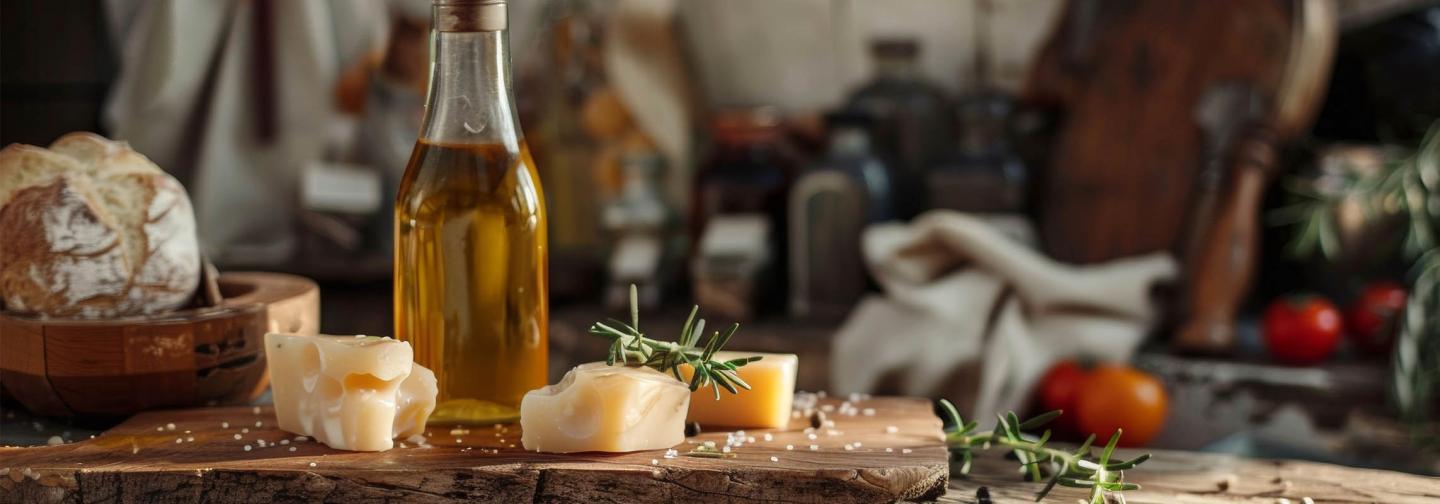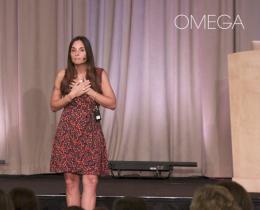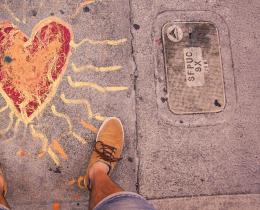Combined with aerobic conditioning, strength training, and flexibility exercises, a healthy diet will help you live a longer, happier, more balanced life. Although diet fads come and go, there are some fundamental truths of intelligent eating that withstand the tests of time and scientific scrutiny.
Leonardo da Vinci’s Timeless Nutrition Principles
 Choose fresh, whole foods: Seek food that is fresh, natural, and wholesome. Leonardo didn't have to be concerned about avoiding overly processed, additive-injected "junk" foods, but we do.
Choose fresh, whole foods: Seek food that is fresh, natural, and wholesome. Leonardo didn't have to be concerned about avoiding overly processed, additive-injected "junk" foods, but we do.- Embrace fiber-rich ingredients: Eat plenty of fiber. Raw and lightly cooked vegetables, grains, beans, and other fiber-rich foods were the mainstay of Leonardo's diet. These foods "brush" and exercise your digestive tract, keeping it active and healthy.
- Eat light, eat mindfully: Avoid overeating. Leonardo counseled, "Sup light." Learn to stop eating just before you are full. You will feel better and probably live longer (numerous experiments ... have shown that rats who are slightly underfed live twice as long as those who gorge themselves.)
- Stay hydrated like an Italian: Get enough water. Every traditional Italian table is set with numerous bottles of pure mineral water. Your body is 80 percent water, and it needs a regular resupply to flush away toxins and rebuild cells. So make water-rich foods (vegetables and fresh fruits) an integral part of your daily dining. When thirsty, drink pure (distilled or spring) water or fresh fruit/vegetable juice. Avoid swilling colas and other so-called soft drinks. They are filled with additives and empty calories.
Prioritize Good Fats Over Bad Fats
- Minimize your intake of sugar. A balanced diet will give you plenty of natural sugars. Excess sugar distorts your metabolism and loads you up with useless calories. Avoid being seduced by the short-term energy surge that seems to come from a sugary snack; if you pay attention, you'll notice that it is usually followed shortly by a depression of vitality.
- Use healthy oils like olive (Leonardo's favorite) and avocado, and avoid margarine altogether.
- The maestro was a vegetarian. His favorite everyday dish was minestrone soup, composed of vegetables, beans, and rice or pasta. If you enjoy meat, have one serving per day as a recommended maximum. Avoid eating animals that have been fed growth hormones, antibiotics, and other toxins.
- Vary your diet. A varied diet is more likely to be balanced and enjoyable.
Make Every Meal an Experience
- Enjoy a little wine with dinner. Leonardo recommended enjoying wine with food, in moderation; but he decried overuse and drunkenness. Actuarial statistics demonstrate that moderate alcohol consumption (defined as up to two glasses of wine or two beers per day) seems to prolong average life span for two years. There is also significant evidence that moderate daily enjoyment of red wine with food improves circulation and can help prevent heart disease. Of course, as the maestro knew, drinking beyond moderation has the opposite effects, shortening life span and pickling the nervous system.
- Don't eat, dine. "Grabbing a bite" while "eating on the run" usually leads to poor dietary choices and much subsequent indigestion. Instead, discipline yourself to sit down and enjoy every meal. Create, as the maestro did, an aesthetically pleasing environment: a nice place setting, flowers on the table, an artful presentation of even the simplest foods. A pleasant atmosphere and an unhurried pace improve your digestion, your equanimity, and the quality of your life.
- Most important, listen to your body before every meal and determine what you actually want to eat. As Leonardo emphasized, "Eating contrary to the inclination is injurious to the health." If in doubt, imagine how you will feel after you eat the food in question. Then pause for a few moments before eating and bring your awareness to the present moment. Savor the smell, taste, and texture of every bite. Make every meal an experience of Sensazione.
Adapted from the book How To Think Like Leonardo Da Vinci by Michael J. Gelb. Copyright © 2000 by Michael J. Gelb. Reprinted by arrangement with Dell, an imprint of Random House, a division of Penguin Random House LLC. All rights reserved.



